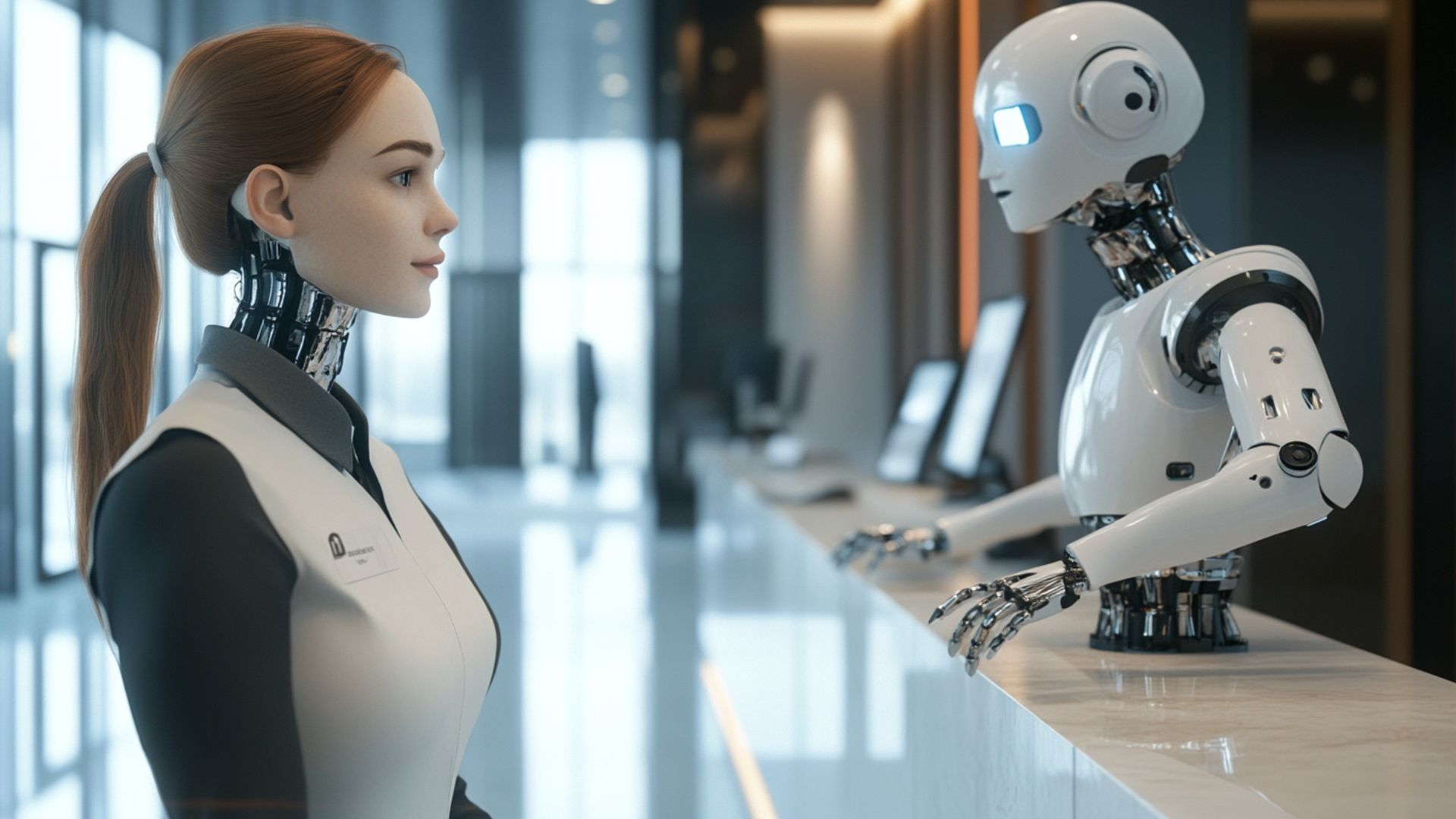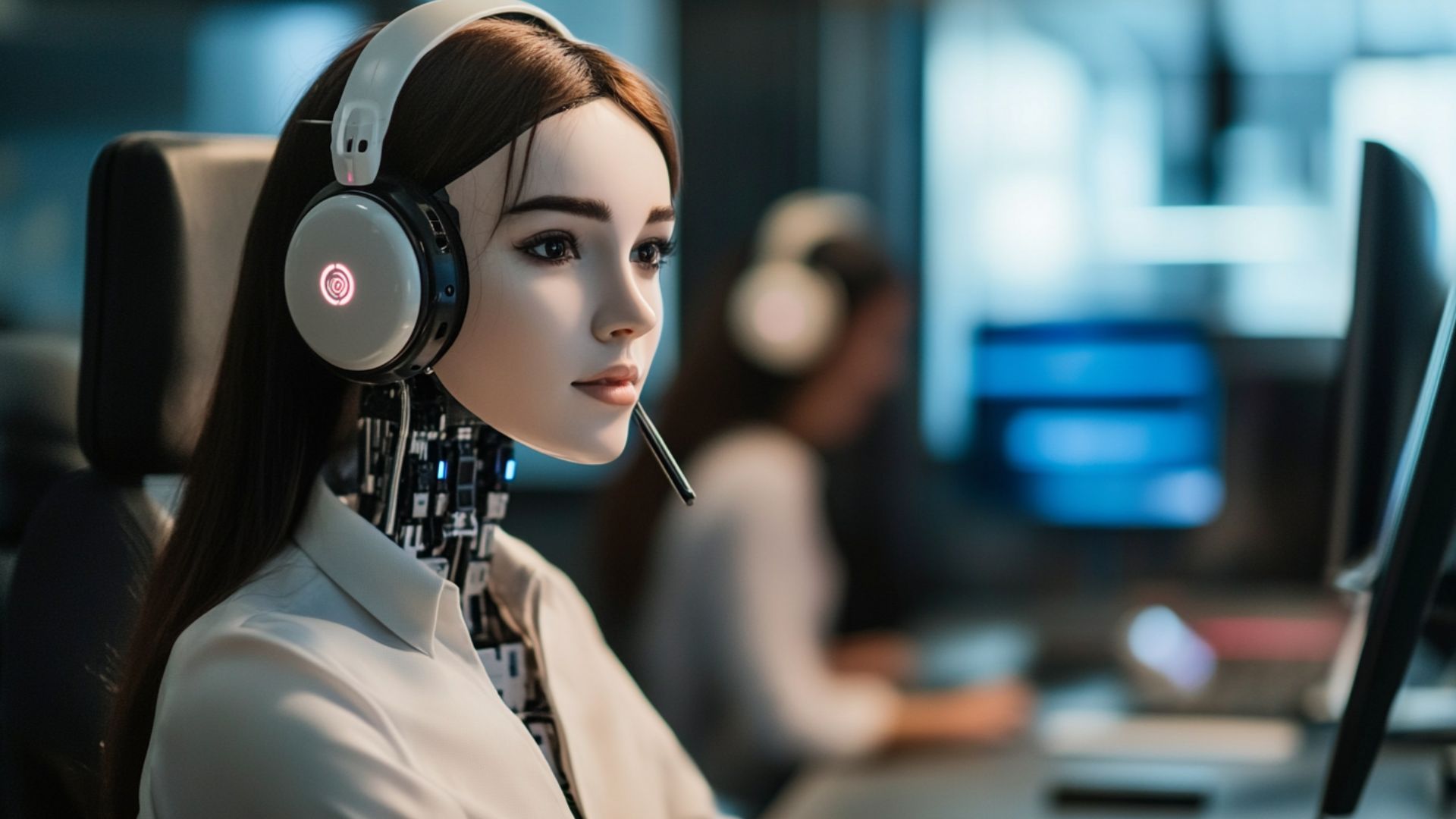Revolutionizing Dining: The Impact of Restaurant Automation on Efficiency and Service
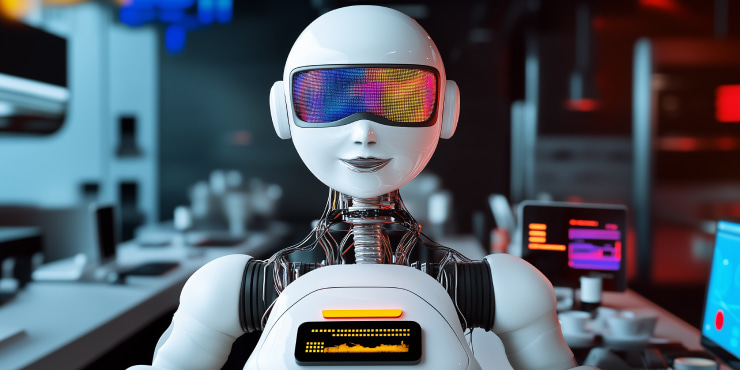
Restaurant automation is transforming the dining industry. It drives significant changes in how restaurants operate and deliver service. There is a rise in advanced technologies as automation tools revolutionize various aspects of restaurant operations, ranging from ordering and payment to food preparation and delivery. These innovations include self-service kiosks, AI-powered ordering systems, robotic chefs, and inventory management software. These innovations are reshaping how restaurants function. These tools enhance operational efficiency and improve the customer experience by reducing wait times, increasing order accuracy, and offering personalized services.
The benefits of restaurant automation tools are evident as streamlined processes mitigate human error, minimize labor costs, and enable restaurants to operate more efficiently. Additionally, automation helps businesses save time and resources, improving profitability. As technology advances, dining automation will play an even more significant role in elevating service quality. It will revolutionize operational success in the restaurant industry.
Understanding Restaurant Automation
Restaurant automation integrates technology and tools to streamline various operations, improving efficiency, accuracy, and customer experience. It encompasses multiple applications designed to simplify tasks. These applications reduce human error and optimize resource management. As technology advances, restaurant automation continues transforming the industry. It benefits both restaurant owners and customers through several key applications:
- Ordering Systems: Self-service kiosks and digital menus allow customers to place orders directly, reducing wait times and errors. AI kiosks also offer personalized suggestions.
- Kitchen: Robotic chefs and cooking systems help prepare food consistently and efficiently. They improve the speed of service and reduce labor costs.
- Inventory Management: Automated inventory systems track stock levels in real time. They help reduce waste and improve ordering accuracy.
- Marketing Automation: AI-driven systems personalize marketing efforts by sending targeted promotions. Automation in restaurants individualizes loyalty rewards. These systems tailor offers to customers based on their preferences.
- Point-of-sale (POS) Systems: Modern services streamline payment processes and track sales data. They offer insights into sales trends and customer preferences.
- AI-driven Chatbots: These tools handle customer inquiries and provide recommendations. They assist with reservations. Such tools enhance the overall customer experience.
The impact of restaurant automation on operations is significant. It speeds up processes, reduces errors, and lowers operational costs. Businesses must adopt restaurant automation systems to improve service delivery, optimize staffing, and increase profitability. Automation is crucial in modernizing restaurants. It allows meeting customer expectations for fast, accurate, and personalized service. More establishments are embracing these technologies to stay competitive.
Order Automation: Streamlining the Ordering Process
Restaurant automation has revolutionized the ordering process. Computerized systems simplify the process for both customers and staff. Implementing this automation is crucial as businesses can significantly enhance operational efficiency while improving customer satisfaction. Some standard tools used for order automation include:
- Self-service kiosks: Customers can place orders directly. They reduce wait times and allow for a more interactive experience.
- Mobile apps: Customers can browse menus, customize orders, and even pay from smartphones. These features make the process more convenient and seamless.
- Online ordering systems: They enable customers to place orders ahead of time. It ensures quicker service upon arrival and reduces in-store congestion.
- Tableside ordering tablets: Staff can take orders on tablets that send them instantly to the kitchen, speeding up the entire ordering process.
The main benefits of restaurant automation in the ordering process are significant. It reduces human error by ensuring accurate order entry. Automation speeds up service by eliminating bottlenecks. Automation systems improve the overall customer experience by offering convenience and reducing wait times. This automation also frees staff to focus on other tasks.
Kitchen Automation: Improving Efficiency Behind the Scenes
Automation in the restaurant kitchen is transforming food preparation and cooking. It revolutionizes inventory management. Automation allows restaurants to run more efficiently and consistently. Incorporating automation in restaurants provides an effective solution. Kitchen staff can streamline operations, reduce errors, and ensure high-quality results. Some key kitchen automation technologies include:
- Robotic chefs: These automated cooking systems prepare dishes with precision. They ensure consistent taste and presentation.
- Smart ovens and grills: Devices that can be programmed to cook food at exact temperatures and times. They improve efficiency and reduce the risk of overcooking.
- Automated inventory tracking: Systems monitor stock levels in real time. They alert staff when supplies are running low and help reduce waste.
- Prep assistants: Machines aid with chopping, slicing, and mixing. They save time and improve consistency.
The benefits of restaurant automation in the kitchen are significant. It minimizes food waste by ensuring proper portion control. Robotic tools speed up cooking processes and guarantee consistency in food quality. These technologies also allow kitchens to operate with fewer staff, reducing labor costs. They improve overall productivity. Businesses can deliver a faster and more reliable dining experience.
Enhancing Customer Experience Through Automation
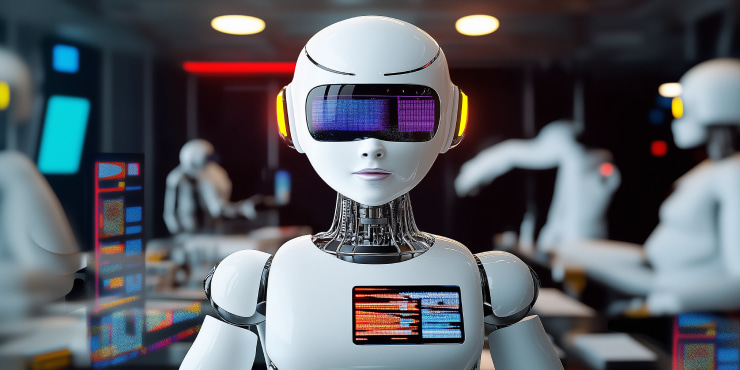
Restaurant automation enhances the dining experience by streamlining various aspects, ranging from reservations to payments and customer feedback. Restaurant workflow automation systems make dining more convenient and personalized. They increase customer satisfaction. Key areas where restaurant automation systems improve the customer experience include:
- Reservations: Online booking systems allow customers to reserve tables effortlessly and can send automated confirmations and reminders. They reduce the chance of errors and no-shows.
- Order Automation: Self-service kiosks and mobile apps are helpful as they allow customers to place and customize their orders quickly. This reduces wait times. A restaurant automation system ensures a more interactive experience.
- AI & Chatbots: These digital assistants help with inquiries. They help customers navigate menus and suggest dishes based on preferences. Chatbots can also take reservations or answer frequently asked questions. They offer round-the-clock customer support.
- Voice Assistants: Smart speakers can place orders or provide personalized recommendations. They enhance convenience and reduce the need for human interaction.
- Payments: Contactless payments and mobile wallets allow customers to pay quickly and securely. They reduce the time spent at the table or counter.
- Feedback Collection: Automated surveys and review systems are helpful. They enable restaurants to gather real-time customer insights. These tools improve service based on direct input.
Integrating restaurant marketing automation is important as it allows restaurant owners to provide faster and more personalized service, enhancing the overall customer journey. The use of these technologies optimizes operations while fostering a seamless experience, leading to increased satisfaction and repeat visits. Restaurant marketing automation allows targeted offers and personalized promotions. They further improve customer engagement and loyalty.
Marketing Automation: Targeting the Right Customers
Restaurant automation tools have revolutionized how restaurants target customers and how owners tailor their marketing campaigns. These tools enable restaurants to collect valuable customer data. They help them segment their audience and deliver personalized offers. Automation ultimately drives engagement and increases sales through several key features in the restaurant industry:
- Customer Segmentation: Automated analytics tools analyze purchase history and preferences. They segment them into specific groups. This allows for more targeted campaigns.
- Personalized Offers: Automation tools enable restaurants to send customized promotions. These tools enable restaurants to deliver discounts and loyalty rewards. These are tailored to individual preferences. Such systems improve customer satisfaction and encourage repeat visits.
- Email Campaigns: Automated email systems send customers timely offers, reminders, and newsletters. They keep them engaged with minimal effort.
- Data Collection: These systems gather and analyze data. This data comes from online orders, feedback, and interactions. They help restaurants make informed marketing decisions.
- Social Media Integration: Restaurant automation software can integrate with such platforms. This integration allows restaurants to run targeted ads and promotions. Automation helps reach the right audience where they spend their time.
Using restaurant marketing automation is crucial for restaurants to optimize their marketing efforts. This helps restaurants reach the right customers with the right message. Automation improves ROI and builds stronger customer loyalty.
Boosting Employee Efficiency with Automation
Restaurant automation significantly boosts employee efficiency. It handles repetitive tasks, freeing up staff to focus on providing exceptional customer service. Automation tools reduce manual effort and streamline operations. They also help employees work more efficiently. Restaurant automation ultimately improves the overall workflow. Some of the key tools that assist staff include:
- Digital Schedules: Automated systems help managers create and adjust staff schedules quickly. They minimize errors and ensure adequate coverage. This eliminates the need for manual tracking.
- Task Management Software: Automation tools track tasks and assign them to the right team members. They ensure that nothing is overlooked. Automation guarantees that tasks are completed on time.
- Automated Inventory Systems: These systems monitor stock levels and provide real-time alerts. These alerts are triggered when supplies are running low. Automation reduces the need for manual inventory checks and minimizes waste.
- Order Management Systems: Automated order management systems streamline the flow of orders from customers to the kitchen. Such tools ensure accurate and timely deliveries.
Incorporating restaurant automation software is a crucial step. Restaurants can optimize daily operations, allowing staff to focus on high-value activities such as customer interaction and improving service quality. Marketing tools can assist in handling promotions and are also helpful in customer outreach. Such systems further enhance employee efficiency and productivity.
Overcoming Challenges in Restaurant Automation
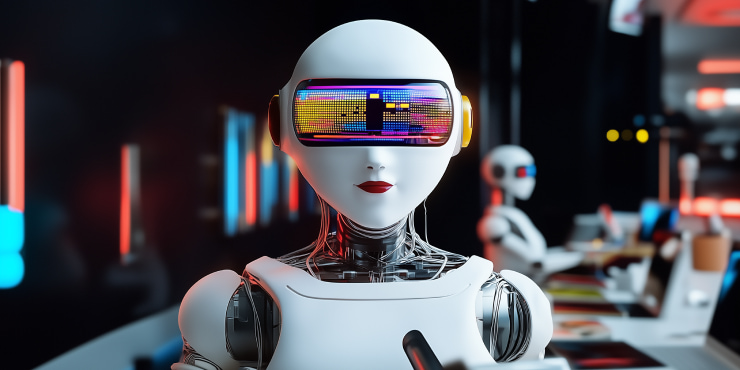
Implementing restaurant automation tools offers many advantages. It also presents several challenges that restaurants must address. Common barriers businesses face when adopting automation include initial investment in technology, training requirements, and resistance to change. These obstacles can be overcome with careful planning and the right approach.
- Training Requirements: Employees may require significant training to use new technologies effectively. This can lead to temporary disruptions in operations. To overcome this, restaurants should implement comprehensive training programs. These programs offer ongoing support, gradually allowing staff to become familiar with the tools. Engaging employees early in the process and explaining the benefits of automation is vital. This approach can help foster acceptance.
- Initial Costs: One of the primary challenges is the high upfront cost of automation tools. These technologies can be expensive. They range from robotic kitchen aids to advanced restaurant workflow automation software. Restaurants can overcome this by starting small and selecting scalable tools. They focus on solutions that provide the best return on investment. They are generally automated order-taking or inventory management systems.
- Resistance to Change: Staff and management may resist automation. It fears job loss or a shift in responsibilities. To address this, restaurants should emphasize that automation is designed to assist employees, not replace them. Businesses can ease concerns and encourage a positive attitude toward change by highlighting how automation allows staff to focus on higher-value tasks.
Selecting the right automation tools in the restaurant industry is crucial. Restaurant owners should also provide adequate training and ensure a smooth integration process. Businesses can overcome these challenges. This allows them to successfully implement automation. It improves efficiency and provides better customer experiences.
The Future of Restaurant Automation
The future of restaurant automation promises exciting advancements. AI-driven kitchen appliances and robotics are revolutionizing operations, while hyper-personalized customer experiences are reshaping how restaurants function. Automation continues to significantly evolve. It will become integral to the dining industry’s success. Automation in the restaurant industry drives innovation and customer satisfaction. Some of the emerging trends include:
- AI-Driven Kitchen Appliances: Future kitchens will be generally equipped with robotic appliances. These appliances learn cooking techniques, adjust recipes, and adapt to customer preferences in real time. These appliances will improve consistency and quality. They ensure a seamless dining experience.
- Robotics: Automation will continue to play a more significant role. This includes everything from robotic chefs preparing meals to delivery robots bringing food directly to customers' tables. These advancements will reduce labor costs while enhancing speed and efficiency in food preparation.
- Restaurant Order Automation: Advanced systems will allow customers to place and track orders using voice recognition and other innovative tools. Automation streamlines the process and minimizes errors.
- Hyper-Personalized Customer Experiences: This will provide deeper insights into customer preferences. These insights will be gathered through data collection and AI analysis. Using this data, restaurants can offer hyper-personalized menus and promotions. Restaurants may also offer customized service styles. Automation creates a truly unique dining experience for each customer.
These innovations continue to take shape. Automation in the restaurant industry will be a key driver of success. Restaurants that embrace these tools will be better equipped to handle rising customer expectations.
Conclusion: Why Restaurant Automation is a Game Changer
Automation in the restaurant industry is reshaping the dining experience. It increases efficiency and enhances customer service. Automated systems also reduce operational costs. Order automation, kitchen robotics, and marketing solutions are essential. Restaurants can streamline operations and deliver more personalized service. These improvements are necessary to stay competitive. Restaurant owners must embrace order automation. They should invest in the future of their businesses. Do you need help? Contact us.
